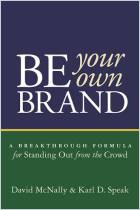加入 getAbstract 阅读摘要

加入 getAbstract 阅读摘要
David A. Aaker
Building Strong Brands
Free Press, 1995
看看什么内容?
Your brand has four assets — awareness, perceived quality, loyalty, and association — and four perspectives — as a product, an organization, a personality, and a symbol. Here’s how to add them up for fun and profit.
Recommendation
David A. Aaker discusses how you can manage a brand as a strategic asset and a source of competitive advantage. He describes several companies’ work at length, including Saturn, General Electric, Kodak, Healthy Choice, McDonald’s, and many others. Aaker shows how you should consider a brand as a product, a person, an organization and a symbol. Aaker offers an excellent in-depth look at many facets of brand development. However, he sometimes tends to go into extensive detail about slight differences in concepts and definitions. While he writes academically, he provides excellent basic principles you can apply to improve your brand.
Summary
About the Author
David A. Aaker is a professor of marketing strategy at the Haas School of Business at the University of California at Berkeley. He has written ten books and more than eighty articles on branding, advertising, and business strategy. He lectures widely and consults for companies in the United States, Europe, and Japan.
























Comment on this summary